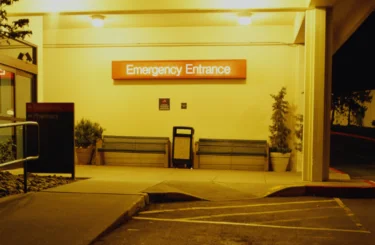Jumping to Conclusions: Why Doctors Make Diagnostic Mistakes
Many people know that heart disease and cancer are the two leading causes of death in this country, but it may come as a surprise to find out what the third one is: medical error.
About 150,000 people die each year from a cause directly related to their medical care, according to a recent study published by Johns Hopkins University patient safety experts. That’s just too many lives lost to potentially avoidable mistakes.
Common sense would say that if we would attack the problem of medical errors the same way we attack heart disease and cancer, we could save patients and their loved ones a lot of suffering. And yet, there’s no nationwide campaign to combat medical errors, which now kill more people than respiratory disease.
The first step would be to address the root causes of medical errors. We know that in most cases errors in diagnoses are the cause of patient injuries and death. For example, doctors sometimes jump to a conclusion that a patient’s symptoms are attributable to the most obvious cause, rather than exploring all the potential causes.
There’s a new book that takes a fascinating look at why people – including doctors — make these kinds of errors in decision-making. Called The Undoing Project, it’s by the same author who wrote Money Ball, the book that led to the movie starring Brad Pitt as a baseball team manager who uses sophisticated statistics to build a winning squad.
In The Undoing Project, Michael Lewis recounts the story of a young woman who went to a trauma center in Canada after being involved in a very serious car accident. She had multiple fractures in her ankles, feet, hips and face. She also had an irregular heartbeat. She told doctors that she had a past history of overactive thyroid, which can cause irregular heartbeat. Doctors quickly concluded that hyperthyroidism was what was causing the irregular heartbeat and got back to focusing on her many broken bones.
But one internist on staff questioned that diagnosis, and asked others to slow down and look for other possible causes of the irregular heartbeat. That’s when they discovered that she had fractured ribs as well as a collapsed lung, which was the true cause of her arrhythmia. When they began treating her collapsed lung – which could have been fatal – her heartbeat returned to normal. A test the next day showed that her thyroid hormone production levels had not been elevated.
Checking for mental errors of specialists on staff was part of the job description of the internist who saved this young woman’s life. If all hospitals had a doctor like that on staff, how many lives would be saved? Unfortunately, the culture of many hospitals and other types of medical facilities is to treat doctors as infallible experts in their areas of specialty.
Errors of diagnosis aren’t the only types of medical errors that lead to deaths in the hospital. Improper management of treatment, improper performance of a treatment or procedure and failure to order medication are common problems as well.
If you or a loved one is being treated in a hospital, it’s important to ask questions and be informed about any diagnoses, procedures or medications ordered by physicians. Ultimately, though, we are dependent on medical staff to be diligent and attentive. If you feel a hospital’s negligence has caused you harm, a member of our Medical Malpractice Litigation Group can discuss your situation with you. Please contact us today!
Andy Dragovic
Andy Dragovic is a member of Sommers Schwartz's Personal Injury and Medical Malpractice Groups. His practice is 100% dedicated to helping victims get compensation for their injuries and losses.





